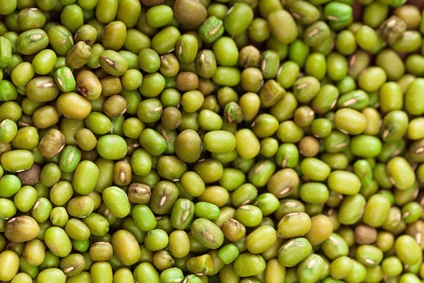Soybean bushels and harvest at record pace
by November 6, 2023 12:09 pm 463 views

Dry weather led to record low water levels on the Mississippi River, but another side impact in the Arkansas Delta has been a stealthy harvest. As of Oct. 29, the state’s most widely grown crop, soybeans, had nearly all been harvested.
The U.S. Department of Agriculture reports that about 91% of the state’s 3 million soybean acres have been removed from the fields. It’s among the fastest harvest ever. Typically, only about 75% of the soybean crop has been harvested by the first week of November.
Not only is the harvest coming in at a record pace, early indications point to the state setting a new bushels per acre record.
Jeremy Ross, extension soybean agronomist for the University of Arkansas System Division of Agriculture, said that generally dry conditions in the early fall were the main factor in speeding the harvest.
Every county in the state’s mid-Delta region to the south is now in some form of drought, according to the U.S. Drought monitor. Conditions in neighboring states such as Louisiana and Mississippi are much worse.
“If you look at the drought monitor, it’s getting pretty severe,” Ross said. “It won’t affect soybeans that much, but some farmers will delay planting their cover crops for the winter due to how dry it is. Some growers had intended to plant wheat, but it’s been too dry.”
Much of Arkansas experienced a welcome downpour last weekend, with 2.44 inches of rainfall recorded in Little Rock on Oct. 28, and another 1.2 inches recorded Oct. 29. While that won’t likely bring the harvest to a halt, it may help to recharge low reservoirs.
“A lot of reservoirs are dry,” Ross said. “We need rainfall this winter to recharge them. We’ve done a lot of irrigation this year, especially in August-September.”
Ross said early-planted beans may have suffered under unusually cold temperatures in late April, but that the majority of soybeans planted within the “main window” in May appear to be rendering high yields.
“I’m hearing farmers saying they’ve got the best soybean crop they could remember,” Ross said. “Right now, USDA has us at a 53 bushel state average, which would be a new state record.”
While the crop may be out of the ground, it still has a way to go to reach its destination. And the ongoing situation of the Mississippi River, with levels so low that barge traffic has slowed to a crawl, is its chief obstacle.
“We’ve been feeling that effect for the last couple of weeks,” Ross said. “We’re just not able to get the grain shipped down to the gulf as rapidly as we have in the past. We ran into this same issue last year, and the river’s levels are lower now than they were last year.”
With little barge traffic moving grain downriver, elevators at buying points are sitting full, Ross said.
“This last 10% of the crop is probably going to set out in the field a little longer than some farmers really want it to, just because there’s really no place for it to go,” he said.
And while little is moving downstream on the Mississippi, even less is moving upriver.
“Downstream traffic on the Mississippi is able to go day and night, but upstream traffic is limited to daylight hours only,” Ross said. “They’re also not able to fill the barges as they typically would, because the barges need to ride higher on the water so they’re not going aground.”
The chief impact of this on growers is a lack of access to fertilizer, Ross said. If the situation continues for an extended period, growers may shift increasing acreage toward soybeans, which require less fertilizer than corn, for example.
